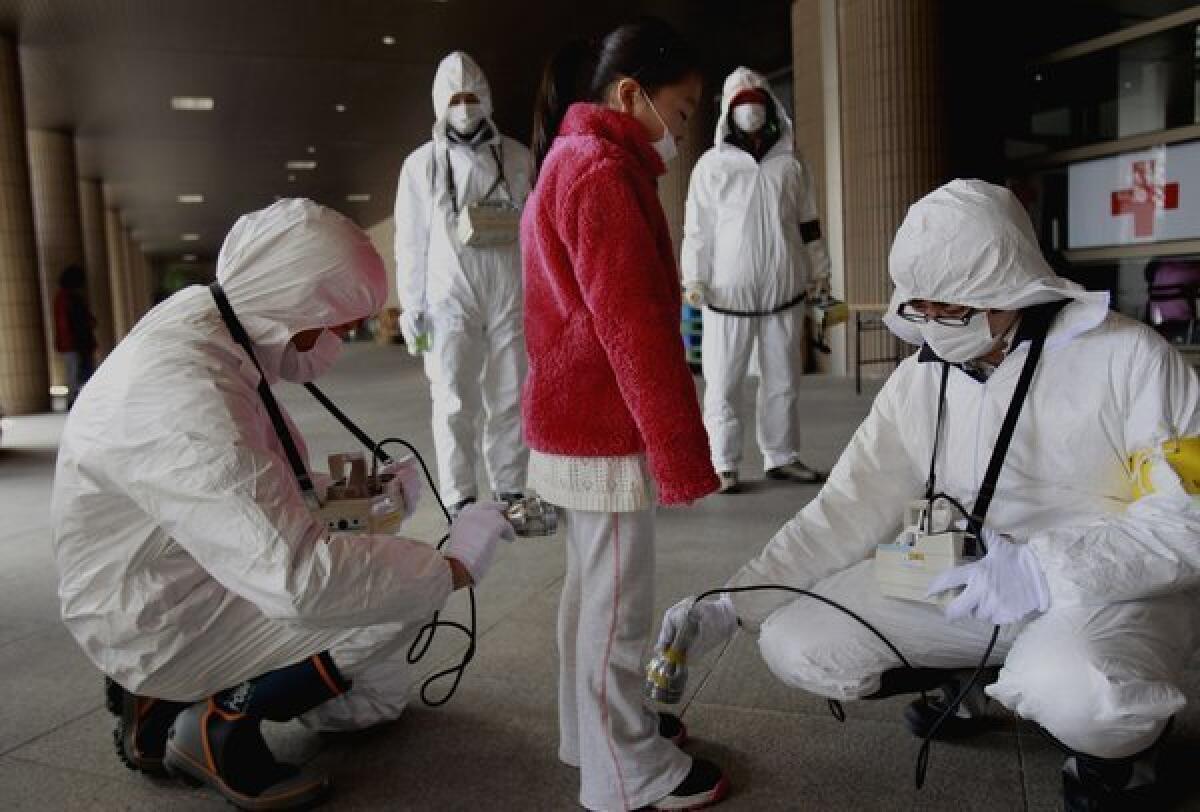Fukushima nuclear disaster adds only small health risks, WHO says

- Share via
The 9.0-magnitude Tohoku-Oki earthquake and resulting tsunami that triggered a meltdown at Japan’s Fukushima Daiichi nuclear power station has resulted in only a small increase in lifetime cancer risks for people living nearby, and an even smaller risk for populations outside of Japan, according to a new report from the World Health Organization.
The uptick in disease resulting from radiation released by the wrecked plant is “likely to remain below detectable levels,” the study authors concluded in their 166-page report, released Thursday. That added risk will likely be drowned out by the choices people make throughout their lives, such as whether to smoke and how much to exercise, they said.
Based on the estimated levels of radiation released into the environment during the Fukushima crisis, scientists determined that the greatest threat people would likely face would be an increased risk of cancer. The most vulnerable people were infants who lived in close proximity to the plant on Japan’s eastern coast.
For instance, baby boys who lived in the area at the time now have a 7% increased risk of developing leukemia during their lifetimes compared with what they would have faced if the meltdown hadn’t happened. Baby girls who lived near the plant and were exposed to radiation now have a 6% increased risk of developing breast cancer and a 4% increased risk of developing any type of cancer that forms solid tumors.
The study authors also calculated that these girls are now 70% more likely to develop thyroid cancer, but they emphasized that the absolute risk was still very small, rising from 0.75% to 1.25%.
Although emergency workers had some of the highest levels of radiation exposure, they had yet to demonstrate acute radiation effects, the scientists found. The only effects that are expected in this group are “possible thyroid disorders in those few workers who inhaled significant quantities of radioactive iodine,” they wrote.
Six Fukushima plant workers died during or soon after the March 2011 disaster. A United Nations report last year determined that none of them perished due to the effects of radiation and attributed their deaths and injuries to physical trauma, cardiovascular stress and heat stress. One reported leukemia death could not be attributed to the meltdown due to the short time between radiation exposure and death, the U.N. said.
The report said exposure levels were insufficient to cause an increase in miscarriages, stillbirths or birth defects. The report did not assess potential psychosocial or mental health impacts from the disaster.
No discernible increase in health risks was expected outside of Japan, the scientists concluded.
Much of the data that was used to develop the risk forecast model was taken from survivors of the Hiroshima and Nagasaki atomic bomb blasts, and from Chernobyl nuclear plant disaster.
The study authors said they took pains not to underestimate potential health risks from the disaster. As such, they assumed that people living nearby the power plant took longer to evacuate than they actually did, and that they ate only food produced in the area.
Edwin Lyman, a nuclear physicist with the Union of Concerned Scientists, a watchdog group, said the WHO report’s focus on the increased risk to each person “tends to dilute the impact” of the disaster.
Lyman pointed to another study done last year by Stanford University scientists who estimated that the meltdown would cause about 310 cases of cancer, including about 130 deaths. That study was published in the journal Energy & Environmental Science.
More to Read
Sign up for Essential California
The most important California stories and recommendations in your inbox every morning.
You may occasionally receive promotional content from the Los Angeles Times.














